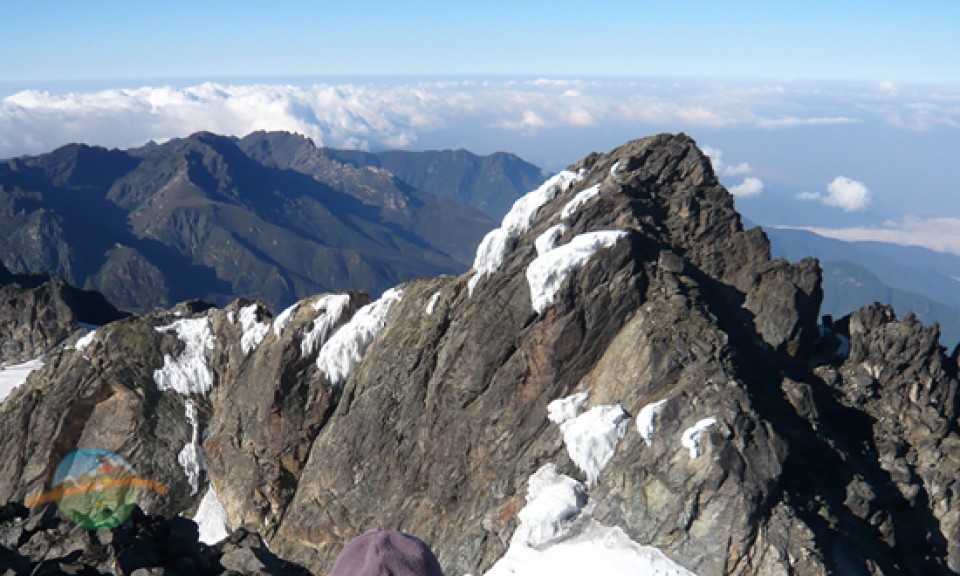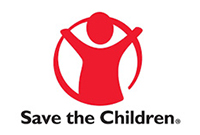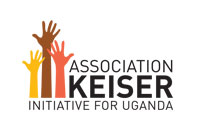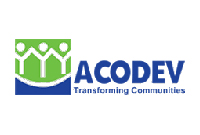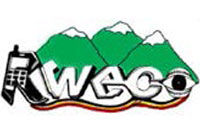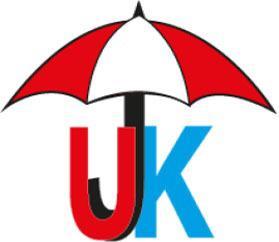Environment and Natural Resources
Cross cutting issues by development partners
Tree cover increase
With support from World Wide Fund for Nature Conservation (WWF), and The Ministry of Water and Environment a total of 670 hectares of tree cover have been established in the district over the last 5 years. Tree and fruit seedlings have planted in the most fragile watersheds in the Sub-counties of Kyarumba, Muhokya and Kyabarungira, Kitwamba, Lake Katwe, Kisinga and Maliba. The watersheds planted include, among others, Nyondo Hill, Kimerangwe Hill, Kyabwaghara Hill in Kyarumba Sub County; Musekera Hill, Butumya Hill, Rwabitoke Hill in Muhokya Sub County; Kyabarungira Hill in Kyabarungira Sub County; and Kaleberyo in Lake Katwe Sub County.
| Year | No. of seedlings planted | Acreage established |
| 2010/11 | 406,981 | 300 ha |
| 2011/12 | 360,250 | 250 ha |
| 2012/13 | 40,000 | 25 ha |
| 2013/14 | 27,000 | 15 ha |
| 2014/15 | 131,363 | 80 ha |
| Total | 995,594 | 670 ha |
Restoration of river banks
A total of 105 hectares of the banks of River Mubuku and 50 hectares of surrounding watersheds have been restored with support from World Wide Fund for Nature Conservation (WWF). The restored watersheds/hills include Kyanya, Bikone, Kikokera, Ibanda and Maliba in Buoye and Maliba Sub Counties.
Water fetching cages
Four water fetching cages have been constructed on Lake Edward in Katwe-Kabatoro Town Council to solve the problem of crocodiles harassing people collecting water from the lake and since their construction no more deaths of humans has been registered. Two were constructed by the district and two more with support from National Association of Professional Environmentalists (NAPE) and USAID STAR.
Accessed to solar and cook stoves
With support from our development partners WWF UCO (World Wide Fund for Nature Conservation, Uganda Country Office) a total of 27,774 households (22,320 and 5454 during 2012/3 and 2013/4 respectively) and 20 secondary schools have accessed solar and cook stoves over the last two years. The schools include Bwesumbu Peas School, Kitswamba SDA S.S, Kibanzanga High School, among others. This is a strategy to respond to the United Nations resolution of ‘Sustainable Energy For All’ by 2030 as well as conservation of nature in the district.
Solar based rural electrification
Under the program, to enable the delivery of social services especially in areas off the national grid, World Wide Fund for Nature Conservation (WWF) has extended solar micro grid to Kayanja village, Kayanzi parish, Nyakiyumbu Sub County on the shores of Lake Edward to demonstrate solar based electricity. A total of 88 households and small scale businesses have showed a big step toward wealth creation.
Critical challenges:
- Negative impacts of climate change (recurrence of floods, droughts, erratic rains)
- Increasing pressure on environment and other natural resources
- Increasing predation by crocodiles on Lake George.
Achievements
Tree cover increase
With support from Government a total of 670 hectares of tree cover have been established in the district over the last 5 years. The Ministry of Water and Environment has continued to provide us with seedlings and we have planted in the most fragile watersheds in the Sub-counties of Kyarumba, Muhokya, Kyabarungira, Kitswamba, Lake Katwe, Kisinga and Maliba. The watersheds planted include, among others, Nyondo Hill, Kimerangwe Hill, Kyabwaghara Hill in Kyarumba Sub County; Musekera Hill, Butumya Hill, Rwabitoke Hill in Muhokya Sub County; Kyabarungira Hill in Kyabarungira Sub County; and Kaleberyo in Lake Katwe Sub County.
6.3.2: Restoration of wetlands and river banks
With support from Government, a total of UGX 46,223,974 has been released over the past five years which has enabled restoration of a total of 106.382 hectares of Kahokya wetland, in Lake Katwe Sub County which is now a source of one (1) water supply system for Kahokya parish. In addition, 15 hectares of river banks along Rivers Mubuku and Nyamwamba have been restored
Conservation
A total of UGX607,871,124 has been received from Uganda Wildlife Authority under revenue sharing scheme since 2012/2013 up to date, in support of interventions towards conservation, problem animal management, and livelihood improvement.
Wildlife Management
As a result, the district supplied and installed a total of 1,100 bee hives in the communities neighbouring Queen Elizabeth National Park in Karusandara and Nyakiymbu Sub Counties to promote Bee Keeping. This is a problem animal management intervention as well as a strategy for production of honey to create wealth at household level.
Food Security
In addition, 10 kilometres of trenches have been constructed in Muhokya, Isango, Nyakiyumbu Sub Counties to scare away problem animals from accessing crop farms. This is a strategy to support initiatives towards food security as well as wealth creation.
Restoration of river banks
A total of 202 hectares surrounding watersheds of Nyamwamba- Mubuku sub catchment have been planted with tree seedlings, fruit seedlings and bamboo calms with support from World Wide Fund for Nature Conservation (WWF) and the Ministry of Water and Environment through Mubuku Integrated Farmers Association. The watersheds/hills include Kyanya, Bikone, Kikokera, Ibanda and Maliba in Buoye and Maliba Sub Counties.Other waterheds include Nyakabingo hill in Kilembe Sub County, Kihara parish in Rukoki Sub County.
Water fetching cages
A total of four water fetching cages have been constructed on Lake Edward in Katwe-Kabatoro Town Council to solve the problem of crocodiles harassing people collecting water from the lake and since their construction no more deaths of humans has been registered. This is with support from National Association of Professional Environmentalists (NAPE) and Uganda Wildlife Authority.
Renewable Energy interventions
With support from our development partners WWF UCO (World Wide Fund for Nature Conservation, Uganda Country Office) a total of 27,774 households (20% of the households); and 20 secondary schools have accessed solar and cook stoves over the last two years. The schools include Bwesumbu Peas School, Kitswamba SDA S.S, Kibanzanga High School, among others. This is a strategy to respond to the United Nations resolution of ‘Sustainable Energy For All’ by 2030 as well as conservation of nature in the district.
Solar based rural electrification
Under the program, to enable the delivery of social services especially in areas off the national grid, the district in collaboration with the Ministry of Energy and Mineral Development (MEMD) and World Wide Fund for Nature Conservation (WWF) has extended solar micro grid to Kayanja village, Kayanzi parish, Nyakiyumbu Sub County on the shores of Lake Edward to demonstrate solar based electricity.
Rural Electrification Program-Grid Based Extension Program
Kilembe Investments Limited (KIL) is implementing Grid Based Extension Program under the Rural Electrification Program) in Western Electricity Service Territory. During the FY2013/14 a total of 32.85km of medium voltage lines (33KV) and 78.15km of low voltage distribution lines were constructed. On-going procurements for the FY2014/15 are 7km of medium voltage lines (33KV) and 13.1km of low voltage distribution lines. In terms of connections, a total of 2,781 new connections were completed during FY2013/14 and 5,000 connections will be completed during FY2014/15.
Critical challenges:
- Negative impacts of climate change (recurrence of floods, droughts, erratic rains)
- Continued encroachment on government lands
- Increasing pressure on environment and other natural resources
Key Achievements from 2011/12 to date
| KEY ACHIEVEMENTS |
| FY 2011/2012 |
| 220 people trained in Environment and Wetlands management |
| Development of 2 wetland management plans for Kahokya and Kyanzutsu |
| 106.382 Ha of wetlands restored and 1 water supply system for Kahokya parish installed on Kahokya Wetland |
| FY 2012/2013 |
| Formulated 15 Sub County Wetlands Action Plans |
| Updated 1 wetlands inventory |
| Formulation of the River Nyamwamba-Mubuku Management Plan |
| FY 2013/2014 |
| Demarcated and restored 10 Ha of river Banks |
| Formulated and discussed 1 wetland management Bye-Law for Kathehe Wetland |
| 2 Management plans for Kahokya and Kyannsutsu implemented through supply of 18 Bee Hives |
| FY 2014/2015 |
| 5 Ha of River Bank restored on River Nyamugasani |
| Conducted training of 55 people (31 men and 24 women) in environment, wetland and natural resources monitoring |
| FY 2015/2016 (As at December 2015) |
| Demarcated 5 ha of Katehe wetland in Ihandiro Sub county |
| Conducted training of 70 people (34 men and 36) women in environment and natural resources monitoring in Nyakiyumbu, Kyarumba, Ihandiro, Lake Katwe, Central Division, Nyamwamba Division |
Other Central Government Transfers (Uganda Wildlife Authority)
| Protected Area | FY 2012/2013 | |
| ACTUAL (UGX) | KEY ACHIEVEMENTS | |
| Rwenzori Mountains National Park | 62,000,600 | Bee Keeping, Goat Rearing and Tree planting |
| Kibale National Park | 17,500,000 | Goat Rearing and Trench Excavation |
| Queen Elizabeth National Park | 150,000,000 | Bee Keeping |
| 229,500,600 | ||
| FY 2013/2014 | ||
| Rwenzori Mountains National Park | ||
| Kibale National Park | ||
| Queen Elizabeth National Park | 189,185,262 | Bee Keeping, Trench Excavation and Community Tourism Development |
| FY 2014/2015 | ||
| Queen Elizabeth National Park, Rwenzori Mountains National Park, | 189,185,262 | Funds were transferred to the Lower Local Governments to support implementation of community project: goats, apiaries, trench Excavation |
| Kibale National Park | No release | No projects implemented |
| FY 2015/2016 | ||
| Queen Elizabeth National Park, Rwenzori Mountains National Park, Kibale National Park | No release yet | |
| TOTAL | 607,871,124 |
Annex 2: Actual acreage established over years
| Year | No. of seedlings | Monetary value | Acreage established |
| 2010 | 406,981 | 177,300,000 | 300 ha |
| 2011 | 360,250 | 205,900,000 | 250 ha |
| 2012 | 40,000 | 21,200,000 | 25 ha |
| 2013 | 27,000 | 13,500,000 | 15 ha |
| 2014 | 131,363 | 80,117,890 | 80 ha |
| 2015 | 53,000 | 32,324,170 | 47 ha |
| Total | 717 ha |


